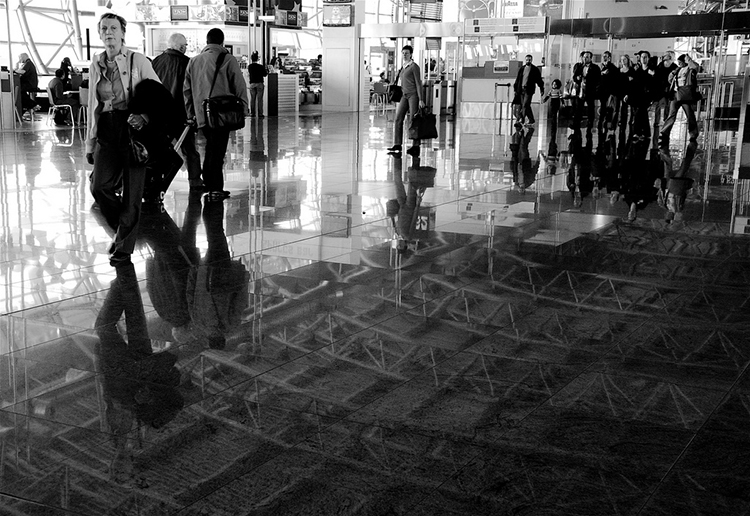
Airport by Astrid Westvang on Flickr.
You wait patiently in a line. You’re doing mental arithmetic about the next hour. As the line snakes along, you pass by the same faces every few minutes, giving the time an odd rhythm. A bomb-sniffing dog lightens the mood. You know not to try to pet it. As you approach the security agent you give him your boarding pass, or place your phone on the reader. Then comes the high-speed undressing. Coat. Belt. Pragmatic slip-on shoes. You chose socks carefully this morning. You give yourself a few reassuring pat-downs as your stuff rolls behind the black rubber straps. You go through the scanner and assume the hands-up pose. Another agent makes you wait until the scan comes up clear. You know what they’re looking at. This interaction fields weirdly intimate, so you don’t make eye contact. Besides, it might make you seem suspicious–too alert, or defiant.
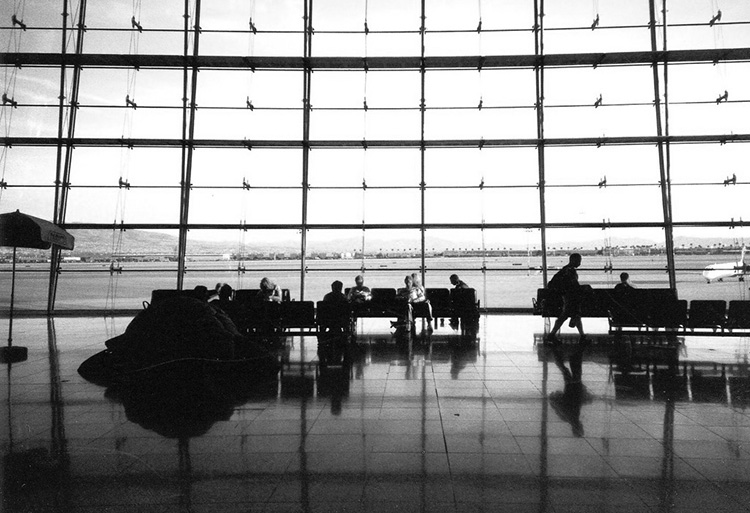
Airport by James Evans on Flickr.
Airports are inescapably strange places. They feel like non-spaces from the future furnished with nostalgic cues from 1980s shopping malls. The entire point of going to one is to leave it, but unlike great train stations, they are not gateways to cities. They are hubs, connectors between surface transit and air travel.
Airports also inevitably embody stories. These are always about flight, and its relationship to glamor, to speed, to safety, to reliability, and to our senses of place and time.
You and I are the enlisted protagonists of today’s version of that story. Airports are attempts to solve massive logistical and communications challenges. To take stock of the current state of the airport experience means asking two questions: What priorities are we solving for, and how well are we doing?
The form airports take and the experience they offer represent how we have prioritized those challenges over time.
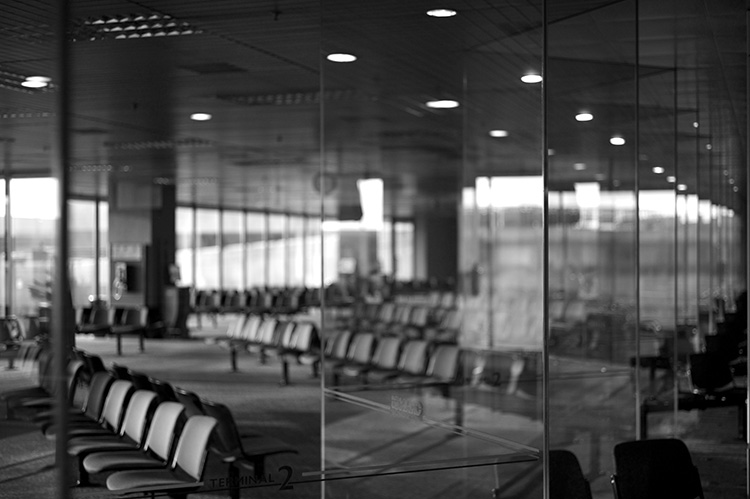
Airport by Michael Cory on Flickr.
You go to your gate. It’s automatic. Everyone does this first. Being at your gate is deeply comforting. Where are you going? You blink at your boarding pass, trying to get clear the difference between 13A and 29C. One of those is your gate, the other is your seat. Keep them straight. You look around. The crowd is a mix of befuddled wanderers and decisive striders. Once you’re oriented, you ride the slipstream of one of these fast-moving phone-talkers.
The crowd at the gate reminds you of that quote “Hell is other people.” Who said that? You’re tired and can’t remember. There’s an altercation at the next gate that diverts attention from the cable news overhead. Thank God that guy is not on your flight.
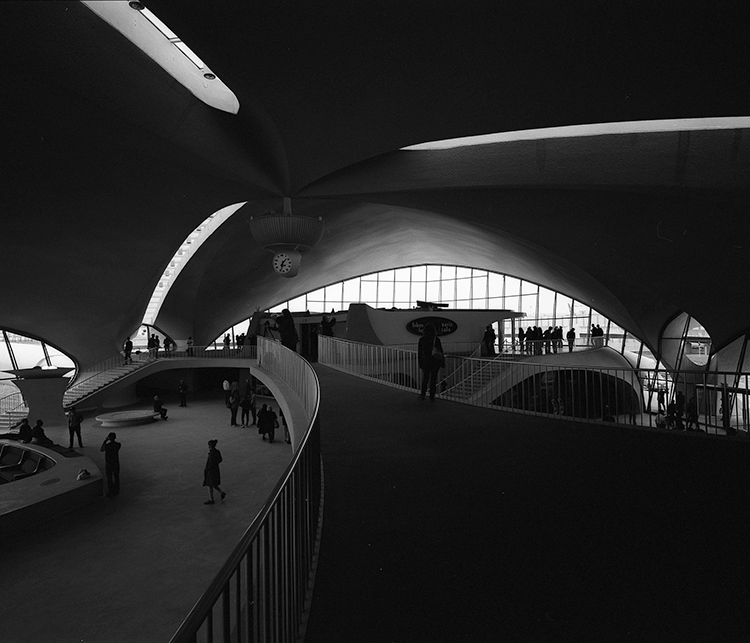
TWA Filght Center, JFK Airport, NYC NY by Kenneth Dellaquila on Flickr.
Nothing embodies the mythic golden age of airports more than the TWA terminal at Idlewild. It represents “the essential modern moment—when technology seemed perfectly in tune with human aspiration” as Alaistair Gordon says in his book Naked Airport. This jet age produced some marvels of design and engineering, from Boeing’s 707 jets, to Emilio Pucci’s bubble helmets and prints for stewardess uniforms, to Saarinen’s terminal itself.
All designed elements pointed to a singular vision of flight. It stood for all the glamor and promise of the future, but this cultural moment was fleeting. There were a mere four days between the Beatles’ first appearance on U.S. television in November 1963, and the Kennedy assassination. For the global jet age and the promise of the new frontier, it took less than a week to go from the end of the beginning to the beginning of the end.
The promise created more demand than it could satisfy. New airports opened that were already beyond capacity on day one. Between 1955 and 1972, U.S. passenger traffic rose from 7 million to 32 million.
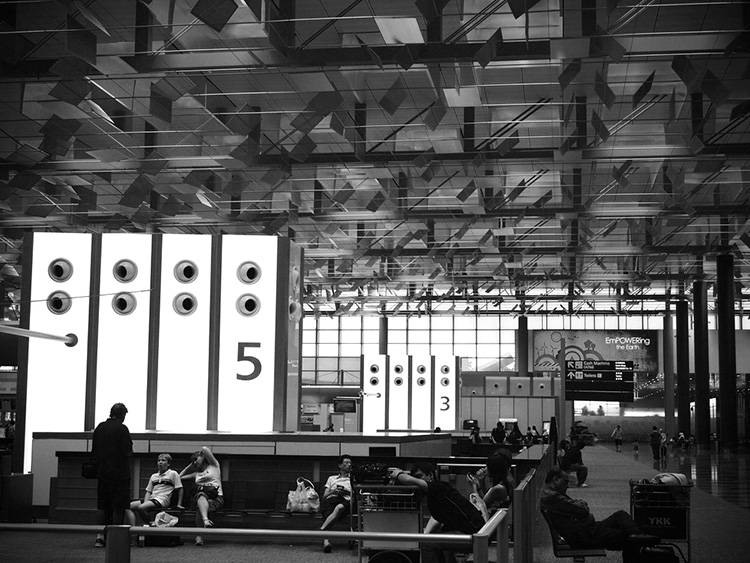
T3 by calebo on Flickr
You find a seat next to someone trying to eat fast food off their lap quickly and cleanly. This feels uncomfortable and intimate.
You check the time. You have time to grab something to eat. Eat-when-you-can is a smart tactic, even if you’re not hungry. Your next meal could be hours away. You see a nearby restaurant, but are put off by the receding grid of screens, one at each table.
You go fetch your water and a magazine. As you settle down to read and wait to board, you notice a sparrow, foraging for crumbs. How long has it been in here?
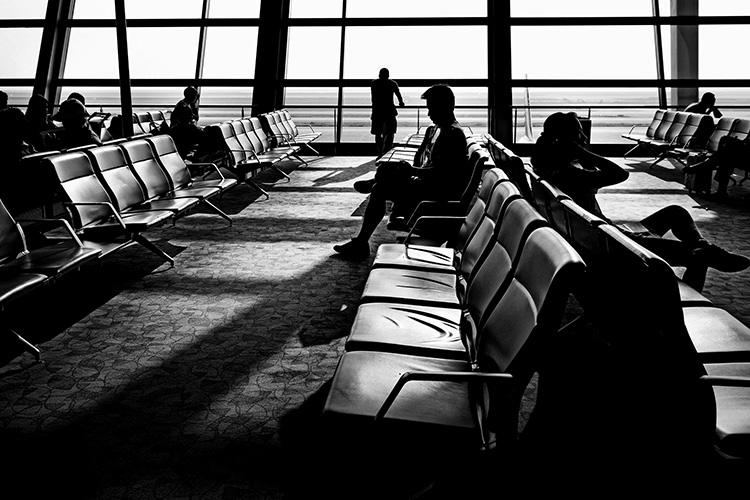
Airport by Jacky Czj on Flickr.
The airport is the only place, except for Disneyland, that you ride a monorail. The proof of airports' un-naturalness and idealism is that they are the native habitat of monorails. We’re talking about a devotion to the aesthetics of efficiency. Airports are designed to feel deliberately like nowhere. It’s sterility as a design choice.
Since September 2001, we’ve been living in the age of insecurity. The TSA was created as a response to 9/11 and changed airports forever. When you think of airports, you think of the security protocols. Many airports had their spacious departure halls split down the middle to define pre- and post- security areas, and create the gates we all pass through. And in a paradox of human psychology, conspicuous security increase our anxiety about risk. Undercover tests of our security measures produce failure rates above 70%.
We’re not just hyper-aware of the threats to our safety, we are also now anxious about how much time we will need at the airport. More and more amenities make it easy to arrive very early. There are so many ways to pass the time that airports now resemble malls with departure gates. Shopping, cinema, massage, comfort dogs—just past security airports are building a domesticated comfort zone. And yet.
People hate air travel. There is ample opportunity to solve for today’s needs: Airports invest $10BN a year to modernize their infrastructure. Imagine the returns on investment if a small percentage of that were dedicated to defining and designing the right experience for workers and travelers, not just on the build-out of spaces and systems.
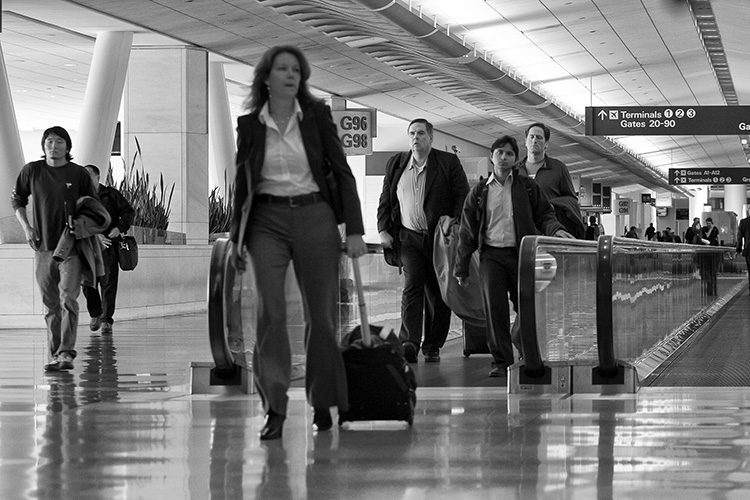
Airport scenes-15 by Jack French on Flickr.
Aeons later, you arrive at your seat. You shove your stupid carryon into the overhead compartment, as fast as you humanly can, so that the other people waiting to get seated don’t get furious with you, and buckle in. You pull out a copy of Naked Airport, and think about the work your company, EPAM Continuum, is doing to make the in-airport experience better.
You think that the airlines that understand the competitive advantage of a better experience will win the day. They understand that to make air travel pleasant or better for people requires building out the connection between satisfied customers and engaged, happy workers.
Picking up your book, you savor the moment just before the reading commences and then remember that your company has a metaphor for the doomed CX strategies that ignore peoples’ practical and emotional needs: “Nice landing, wrong airport.”
